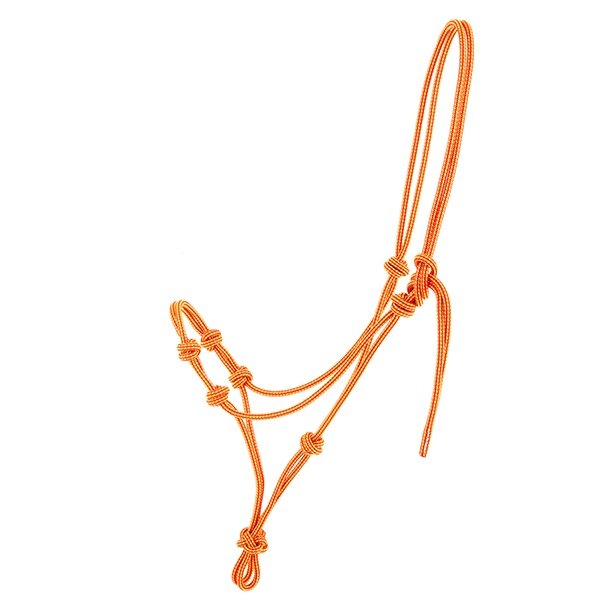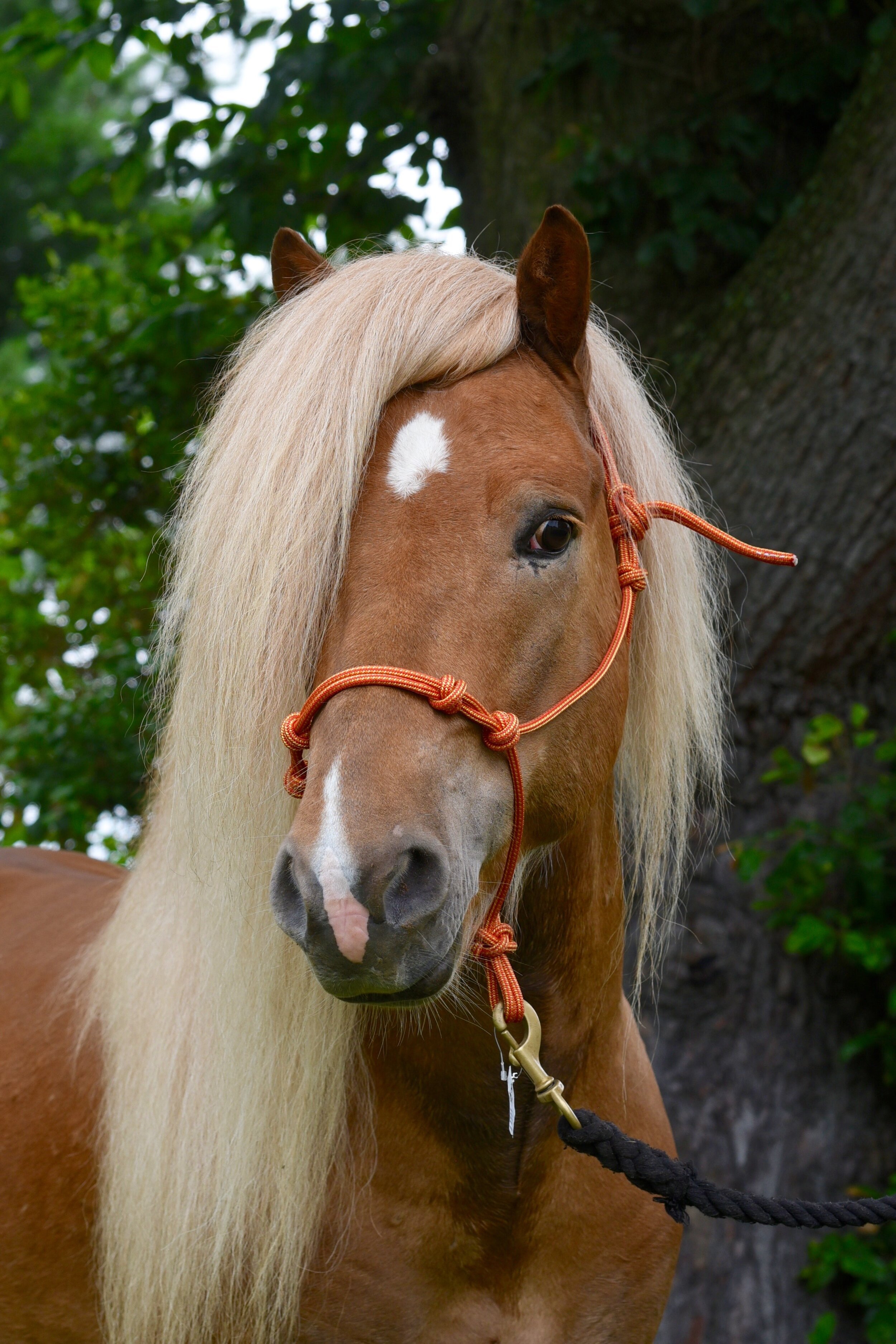 Image 1 of 2
Image 1 of 2

 Image 2 of 2
Image 2 of 2



Rope Halter
By ÁSTUND
Why we love it…
So you will probably think we are totally crazy when we tell you that our favorite rope halter is handmade in Iceland. Please believe us when we tell you that we have searched at expos and online shops and never come across this particular style and quality of rope halter.
We use this rope halter in basic ground work, young horse starting, riding in a rope halter, and liberty training. The rope is thicker than many American brands and therefore less harsh on the horse. The rope is also of particularly good quality. The first rope halter Carrie bought for starting young horses at Holar six years ago is still in use in our training barn today.
The design of this rope halter is the primary thing that makes it special. Notice the pairs of knots on both sides of the part of the halter that goes over the horses nose. The placement and availability of these two knots along with the doubled rope across the nose is key to riding with a rope halter. These knots allow you to attach your reins to the side of the rope halter up on the nose piece. This allows you to give clear turning signals to the horse. At Taktur we start all young horses in a rope halter. Having options as to whether we attached the reins under the chin or on the side of the halter is key to our training. Pressure applied on the side of the face is more likely to promote proper bend, than pressure underneath the chin.
Consider this…
COLOR MAY VARY!
When putting on this rope always be careful to tie it properly. Tie the end around the loop that you string the end through (as shown in photo).
By ÁSTUND
Why we love it…
So you will probably think we are totally crazy when we tell you that our favorite rope halter is handmade in Iceland. Please believe us when we tell you that we have searched at expos and online shops and never come across this particular style and quality of rope halter.
We use this rope halter in basic ground work, young horse starting, riding in a rope halter, and liberty training. The rope is thicker than many American brands and therefore less harsh on the horse. The rope is also of particularly good quality. The first rope halter Carrie bought for starting young horses at Holar six years ago is still in use in our training barn today.
The design of this rope halter is the primary thing that makes it special. Notice the pairs of knots on both sides of the part of the halter that goes over the horses nose. The placement and availability of these two knots along with the doubled rope across the nose is key to riding with a rope halter. These knots allow you to attach your reins to the side of the rope halter up on the nose piece. This allows you to give clear turning signals to the horse. At Taktur we start all young horses in a rope halter. Having options as to whether we attached the reins under the chin or on the side of the halter is key to our training. Pressure applied on the side of the face is more likely to promote proper bend, than pressure underneath the chin.
Consider this…
COLOR MAY VARY!
When putting on this rope always be careful to tie it properly. Tie the end around the loop that you string the end through (as shown in photo).
